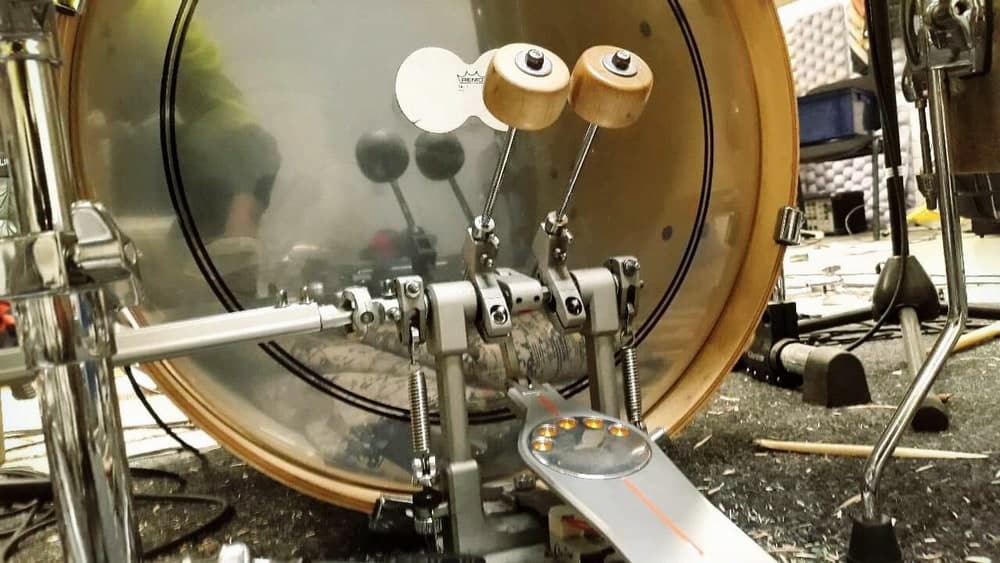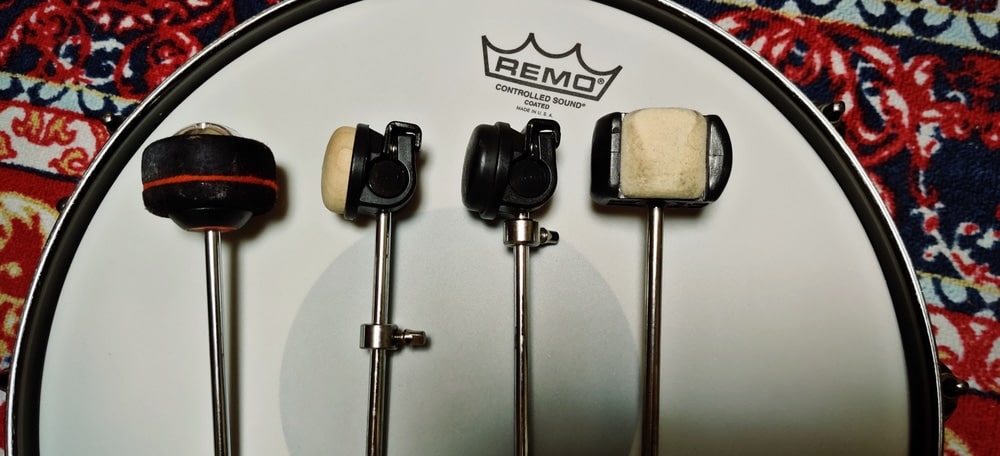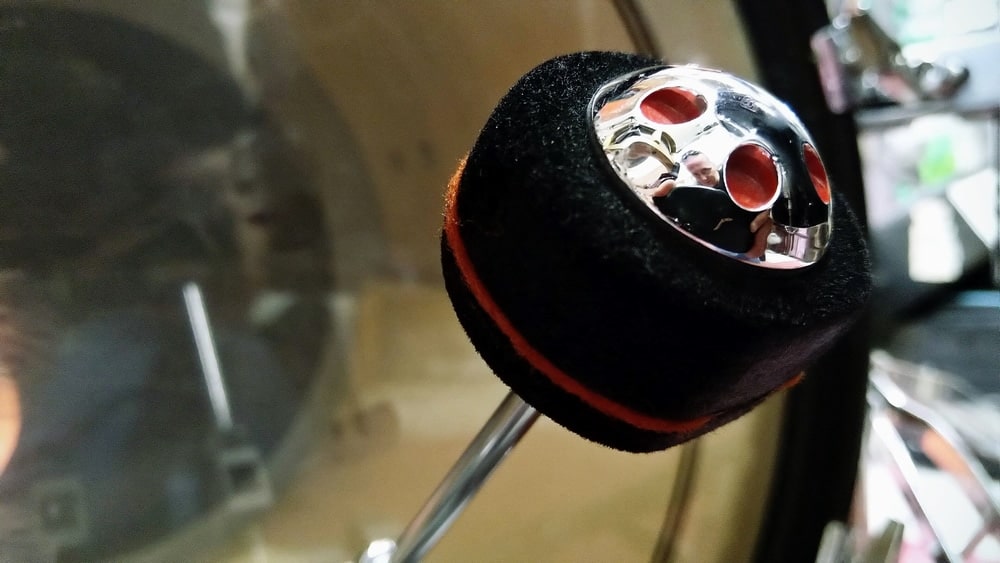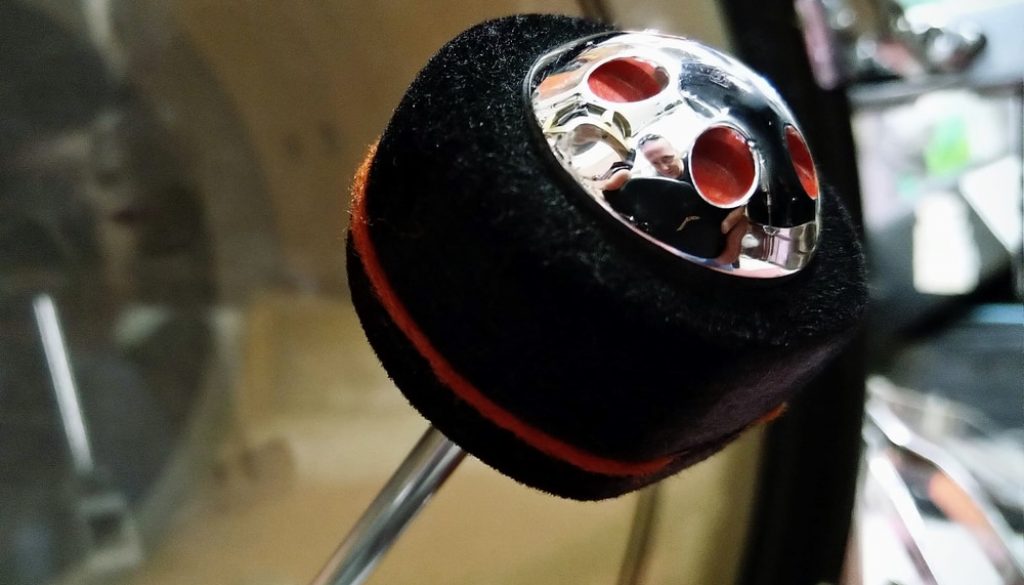The beater – Let’s talk about the bass drum sound
A lot of high-end, clicking sound or a dark thump? When was the last time you compared the bass drum beaters and how they sound? Or have you paid any attention to the difference they make? This small but highly important detail seems to be forgotten by many. Some seem to think that the one thing that doesn’t make any difference is the beater. So let’s talk about the bass drum sound. This should be a pretty clear topic to know if this post is for you.
The beater – Let’s talk about the bass drum sound
The bass drum sound when it comes to both rock and metal usually means a lot of high frequencies. Yet, many use a soft felt beater without thinking any further. This is what I used to do too until something very unexpected happend and I’ll tell you about it in detail soon.
Replacing the genuine bass drum sound with a sample is simple and fast. But why couldn’t you get that sound using analog and organic ways? The non-sample method makes both the drum and your unique style stand out much better compared to using samples. This leads us to the biggest factor in drum sound: have your drum set sound acoustically as close to the mixed album as possible.
A soft felt beater rarely delivers the biggest amount high frequencies to your bass drum sound. So what other beater options there are and have you tried them on your drum set?

The harder the material, the louder the attack. In studio I use wooden beaters with Remo Emperor clear drum head.
–Tommi Tuhkala / Spell Of Torment
Children Of Bodom in St. Petersburg, Russia
I remember how in the late 90’s I was mixing a Children Of Bodom show in a Russian metropolis. The local promoter with tears in his eyes gave us a strong hug on the arrival saying he couldn’t believe we had actually made it there. I wish such an honest reaction would be more common these days too.
The doorway to the venue had a two-by-four that we needed to walk on to avoid the ankle-deep muddy puddle. The local metal heads outside the venue were shooting drugs and offered the needle to us. We kindly refused. The scene was set in style of a David Lynch movie.
The sound system at the venue was 20 to 30 home stereo speakers set in a semi-circle formation on both sides of the stage. Phase cancellation would not be something we’d be lacking tonight. During the show few meters from the raging audience were several serious-looking military police officers with bullet-proof vests and assault rifles. The atmosphere was a bit stronger compared to your regular metal show.
We didn’t let the lack of toilet in backstage bother us, even though we had to use the over-crowded audience toilets. While mixing the opening act the local sound engineer managed to blow up the “subwoofers and low-middle speakers” so we had to perform with an insufficient PA system. The light engineer operated five light switches standing on his toes behind the stage. Despite all that our set was a great success and we couldn’t have done a better job especially when considering the circumstances.
As it was during the four years I toured with Children Of Bodom FOH-engineer, we did not cancel the show this time either. The Finnish sisu (i.e. guts, never-give-up attitude) made us do our best every time. This was to both the audience and the local crew a huge deal and something they’d never forget.

The Children Of Bodom bass drum sound
Once we returned from Russia we went straight to the most famous rock club in Helsinki, club Tavastia to perform a show. The drummer Jaska Raatikainen was sad to announce that one of his bass drum beater felt was lost in Russia.
What should we do? We simply cannot have one beater with the felt and one without. It would make the bass drum sound horrible. After a short discussion we decided to flip both bass drum beaters 90 degrees so that the plastic side would hit the drum head. This would result in an identical sound on both beaters and would save the show at club Tavastia. The next week Jaska would have to buy a new beater as we’d had to have the soft felt. Or would we after all?
Both me and Jaska couldn’t have imagined how much flipping the beaters would improve the bass drum sound. To my surprise the bass drum had much more high-end and it sounded like an album mix!
Jaska never bought that new beater and I started flipping the beaters of each drummer I worked with. The plastic part of the beater hitting the bass drum head made a huge improvement to the bass drum sound. It was much closer to the album sound and less processing was needed during both recording and mixing. It was a pure win-win situation!

A stronger attack works great in modern music to make the notes more readable. In traditional music the beater can be more soft like the Vater Vintage Bomber, which is coated with original lamb’s wool.
–Tommi Virolainen / Royal Max
The beater options
For example Tama CB90F Felt Cobra and Gibraltar Round Flat Self Align are not suitable for what I’ve described above. Yet DW SM101 for example gets my highest recommendation for adding high frequencies to your bass drum sound.
Gibraltar Felt Bass Drum Beater is a beater that I wouldn’t recommend to a metal recording session. There are times when a soft felt beater works the best, but when it comes to metal I’d say it takes us down the wrong path.
On the other hand aka foot the Gibraltar SC3262 Solid Wood Ball Bass Drum Beater is a great example of a wooden beater. Wood as a material is a lot more heavier when it comes to weight. Yet, so is the heaviness of the high frequencies. For sporty, over 200 BPM bass drumming this beater might be too much, but when it comes to rock it delivers an awesome punch.
Gather your fellow drummers to have a beater test event. Each should bring a beater or two and make sure you have a felt, plastic and wooden beater. You will not only hear but also feel the difference. The weight of the wooden beater should not be excluded immediately. Try it out and it might do the magic especially to rock music bringing the long lost punch back.

When upgrading my pedal I moved from hard plastic beaters to Pearl Demon Drive that along with the high-end boosts also the low frequencies. When playing without amplification I use a soft “old-school” felt beater and a higher tuning.
–Toni Paananen / session drummer
Tweak the sound source
Once you have the sound source sounding great, your playing, drums and the whole band will sound much more complete. The less plugins you use the better your drums, recording and live shows sound.
You can get experimental like the metal drummers from the 80’s and 90’s. Back then replacing real sound with samples wasn’t a very common option, so you’d had to be creative to get the sound you wanted.
Vinnie Paul from Pantera is said to have glued a quarter of a dollar to his bass drum head. He then used a wooden beater to create the clicking sound on Far Beyond Driven album.
During that time the drummers sometimes taped an expired credit card to the bass drum head. The beater would hit the credit card to produce a cool sound. I recommend to stay away from triggering and samples. Be creative instead and explore the vast amount of cool options limited only by your imagination.
Read more of my drum-related blog posts:
- How To Improve Drum Sound pt. 1
- To Metronome Or Not
- 4 Tips For Drum Recording
- Avoid This Common Mistake When Recording Drums
- The Tempo And How It Should Not Be Chained
The bass drum beater matters
Thank you very much for reading my thoughts on bass drum sound and the factors that affect it. The bass drum beater has a significant role in drum sound and I hope this writing will inspire you to explore the different beater options and materials available.
What most do not know is that the beater rod should point straight up when it hits the drum head. If not, it can result as an unwanted double hit. To get the beater rod to hit straight, raise the front of the bass drum by adjusting the bass drum legs.
–Tommi Virolainen / Royal Max
In these times of “let’s replace all real drums with samples” it’s sad that not all drummers want to put effort on how their drums sound. Yet, I recommend you to choose the real instead of fake with it comes to drum sound too. With a little effort you can make the real bass drum sound much better compared to samples. This way your unique style and the sound of your drums will be delivered from your music and playing in a lot better detail.
If this post was helpful, please share it on social media. This way you will help your friends to benefit from the information.
To hear your drums in great detail reserve a full analog tape recording session with me at Astia-studioby clicking here. Thank you very much and all the very best!
Astia-studio is a full analog recording studio located in eastern Finland with 25 years of experience. Bands and artists from all over the world including USA and the furthest corner of Russia, Vladivostok have arrived to us for tape recording sessions.



